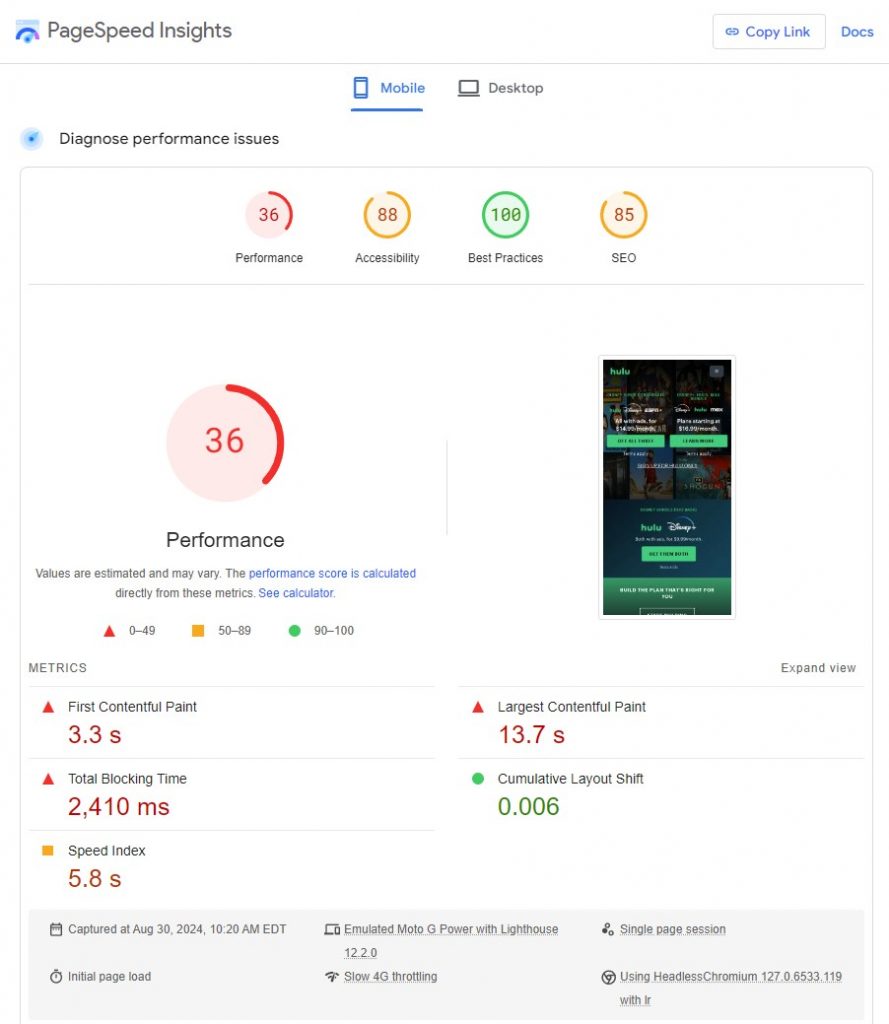So, you’ve just run your website through Google’s PageSpeed Insights tool, and you’re staring at that performance score like it’s the end of the world. Maybe you got a 32 on mobile and are now convinced your business is doomed unless you hit that elusive 100. Hold on a second—before you start throwing money at your site like confetti at a parade, let’s take a deep breath and talk about what that number actually means.
The Google Doctor Is In—But You Might Be Misdiagnosing Your Website
Imagine this: You have a weird pain in your side, so you do what we all do (even though we know we shouldn’t)—you Google your symptoms. After a few clicks, you’re convinced that you have a rare tropical disease. You march into your doctor’s office and start telling them exactly what’s wrong with you. Now, unless your doctor is a saint with infinite patience, they might gently remind you that they have years of training and experience that Google simply can’t replace.
The same thing happens when people look at their PageSpeed Insights score. They see a number and think they know exactly what’s wrong with their site. But interpreting that number correctly takes expertise. Without it, you might end up chasing your tail—or worse, wasting a ton of money on something that won’t actually help your website perform better where it counts.
Spoiler Alert: Literally No One Gets a Perfect Score
Let’s get one thing straight: that perfect 100 on your PageSpeed score? It’s like trying to catch a rainbow—beautiful, but impossible to grab. In fact, even Google.com, the very company that created the tool, doesn’t score a 100. Their site sits at a “meh” 70. YouTube, another Google property, only gets a 35. Yep, you read that right—just 35! And guess what? YouTube is doing just fine, thank you very much.
Here are some other examples that might surprise you:
- Google.com: 70
- Amazon.com: 49
- Hulu.com: 36
- YouTube.com: 35
- Yelp.com: 31
- Walmart.com: 30






If Walmart is rocking a 30 and still getting millions of visitors a day, your score of 32 isn’t the disaster you think it is.
PageSpeed Scores: It’s Not a Race, It’s a Threshold
A lot of people come to us in a panic, demanding that their mobile performance score needs to improve because they’re convinced it’s hurting their search rankings. They think that the faster their page loads, the better their ranking will be. But here’s the deal: page load speed is more of a binary checkpoint for search engines. As long as your site loads quickly enough to meet the minimum requirements, you’re good to go. Whether you exceed those requirements by a little or a lot doesn’t make a difference to the algorithm.
Yes, faster load times can improve the experience for your human visitors, which is always a good thing. The faster your visitors can get the information they need, the happier they’ll be. But when it comes to how Google ranks your site, once you cross that speed threshold, you’re on level ground with everyone else.
The Takeaway: Don’t Obsess Over the Numbers
PageSpeed Insights can give you useful information, but without the background to interpret that data correctly, you might end up drawing some very wrong conclusions. Your website’s performance isn’t about chasing a perfect score—it’s about making sure your site meets the needs of both your visitors and search engines. And sometimes, that means letting go of the idea that a higher score is always better.
So, the next time you see that less-than-stellar PageSpeed score, remember: it’s not the end of the world. Trust the experts, focus on the user experience, and stop trying to chase that impossible 100. Your website—and your wallet—will thank you.


